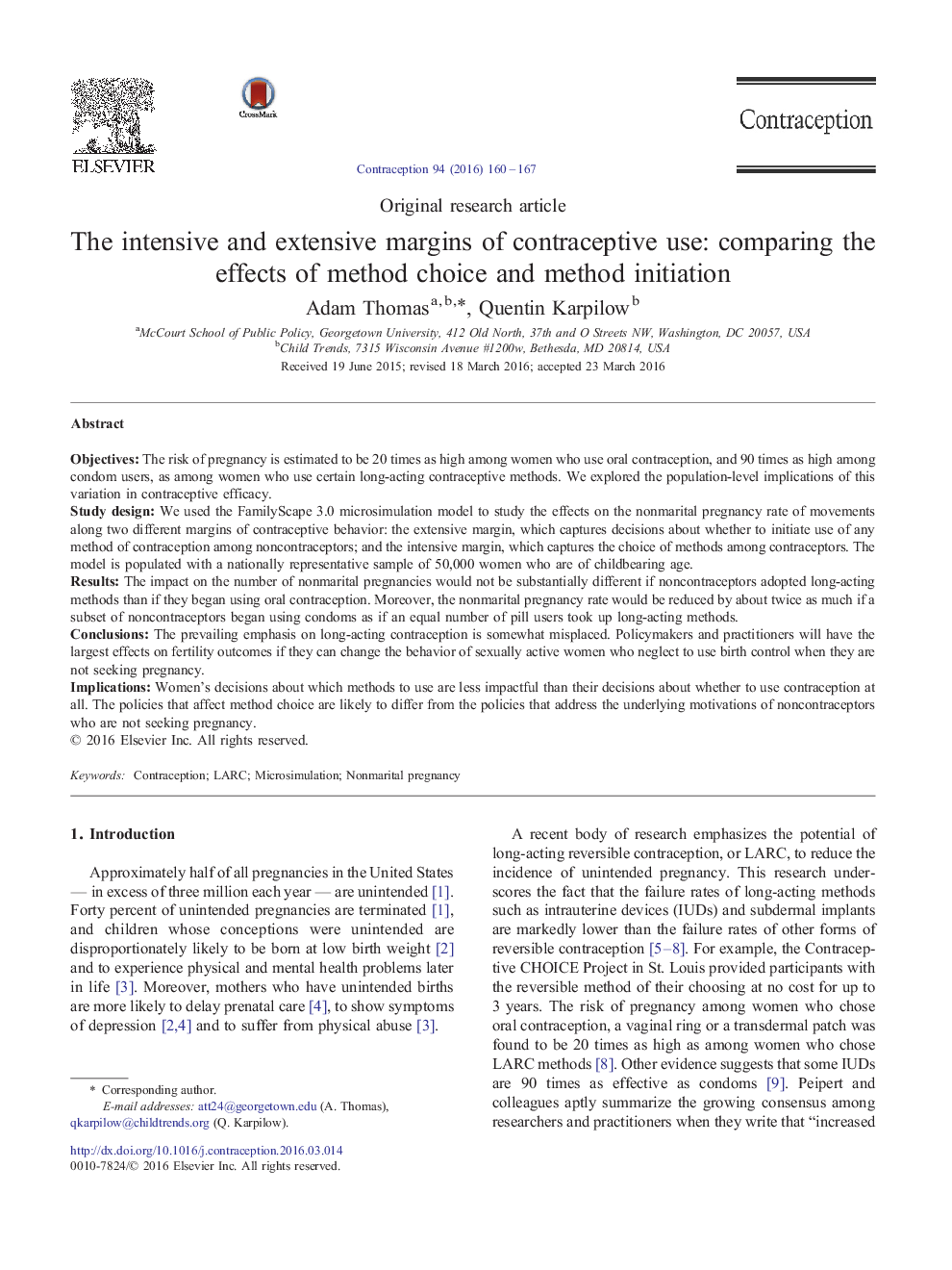| Article ID | Journal | Published Year | Pages | File Type |
|---|---|---|---|---|
| 6170614 | Contraception | 2016 | 8 Pages |
ObjectivesThe risk of pregnancy is estimated to be 20 times as high among women who use oral contraception, and 90 times as high among condom users, as among women who use certain long-acting contraceptive methods. We explored the population-level implications of this variation in contraceptive efficacy.Study designWe used the FamilyScape 3.0 microsimulation model to study the effects on the nonmarital pregnancy rate of movements along two different margins of contraceptive behavior: the extensive margin, which captures decisions about whether to initiate use of any method of contraception among noncontraceptors; and the intensive margin, which captures the choice of methods among contraceptors. The model is populated with a nationally representative sample of 50,000 women who are of childbearing age.ResultsThe impact on the number of nonmarital pregnancies would not be substantially different if noncontraceptors adopted long-acting methods than if they began using oral contraception. Moreover, the nonmarital pregnancy rate would be reduced by about twice as much if a subset of noncontraceptors began using condoms as if an equal number of pill users took up long-acting methods.ConclusionsThe prevailing emphasis on long-acting contraception is somewhat misplaced. Policymakers and practitioners will have the largest effects on fertility outcomes if they can change the behavior of sexually active women who neglect to use birth control when they are not seeking pregnancy.ImplicationsWomen's decisions about which methods to use are less impactful than their decisions about whether to use contraception at all. The policies that affect method choice are likely to differ from the policies that address the underlying motivations of noncontraceptors who are not seeking pregnancy.
